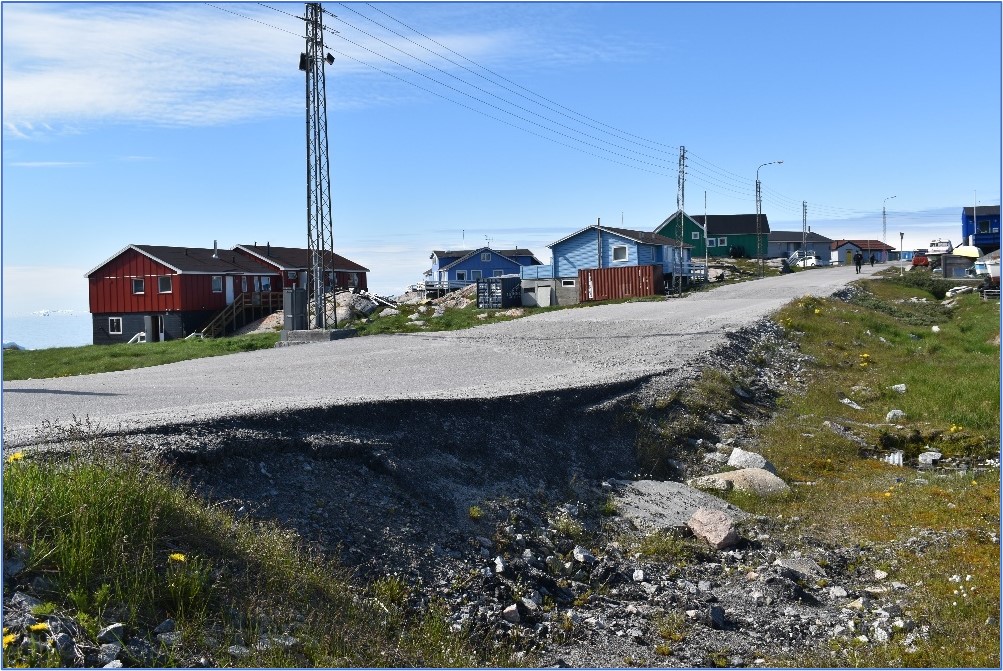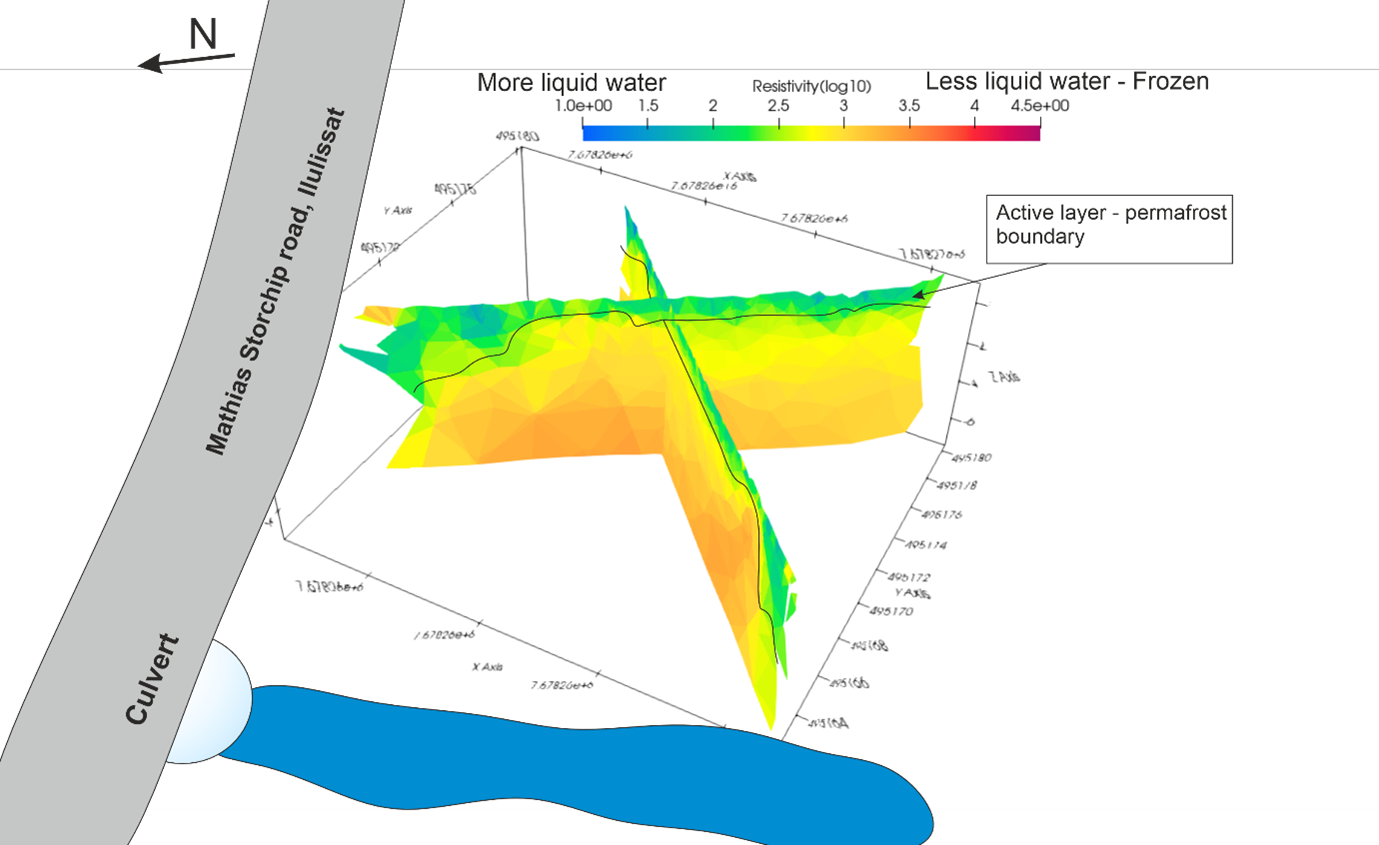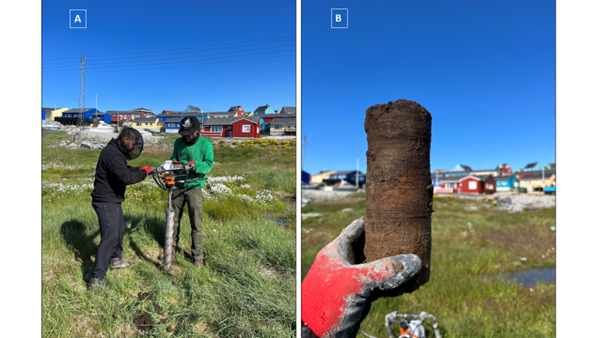A blog by Mihai Cimpoiasu from his recent fieldwork to Ilulissat, Greenland as part of the UK/Greenland Arctic Bursary Scheme 2023/24.
Degradation of permanently frozen ground, also called permafrost, is an effect of global warming and it is currently greatly impacting Greenlandic communities, damaging the local infrastructure, and putting people and their assets at risk. Earlier this July, as part of our Greenlandic Bursaries initiative, myself together with a couple of researchers from DTU campus in Sisimiut we travelled to Ilulissat, Greenland to study the impact permafrost melting had on local roads. Visually, it is already obvious how badly a street like Mathias Storchip (MS) Agg. (Figure 1) can be affected by this phenomenon.

We used a geophysical method, called Electrical Resistivity Tomography (ERT), that enabled us to scan the subsurface by injecting electrical current into the ground and obtain an underground profile of the liquid water distribution. Regions where the ground has lower electrical resistivities contain less liquid water indicating an area partially or completely frozen. Our results (Figure 2) show that along our profiles the permafrost layer boundary lies very close to the surface, 0.5-1m, but nearing MS, the depth of such boundary significantly increases. This implies an alteration in permafrost thickness, potentially due to an increased heat storage and temperature of the asphalt. In addition, we want to monitor the evolution of the permafrost boundary over time, so we have drilled a 2m deep borehole and instrumented it with sensors that record temperature continuously at different depths (Figure 3).

There is much more to be done in order to ensure the Arctic environment is stable and safe for generations to come. With our work, we have now made the first steps in an international collaboration that will hopefully aid the Greenlandic community to adapt to the rapidly changing landscape they reside on.
